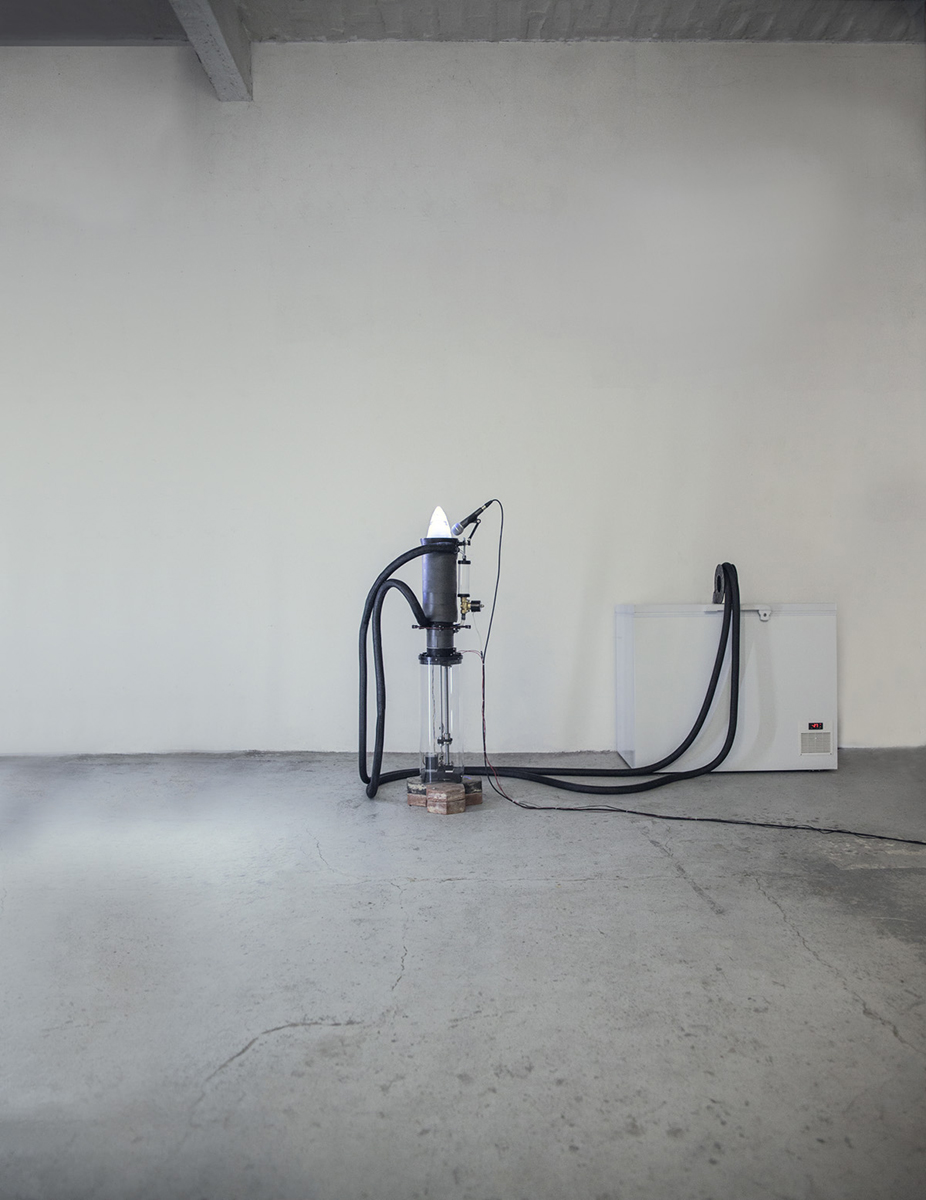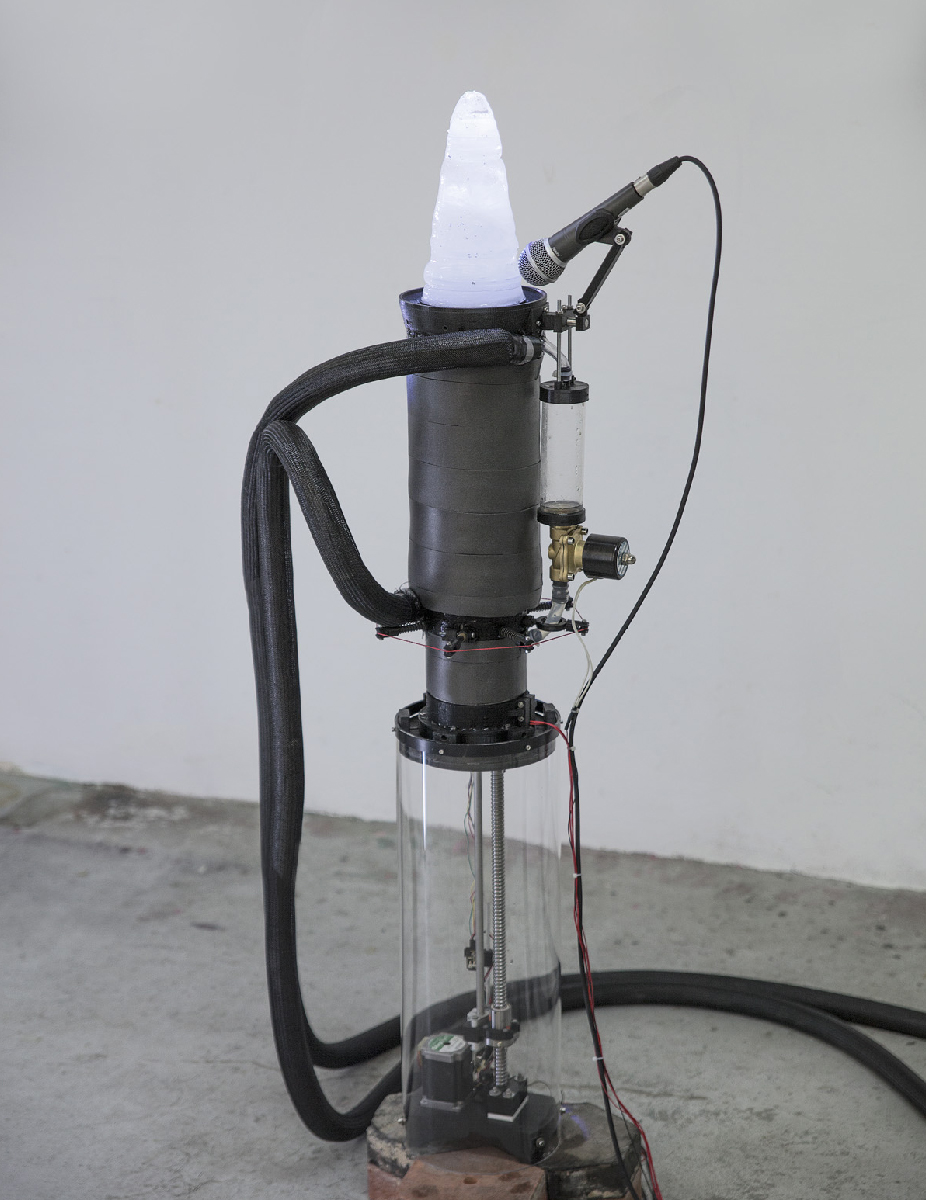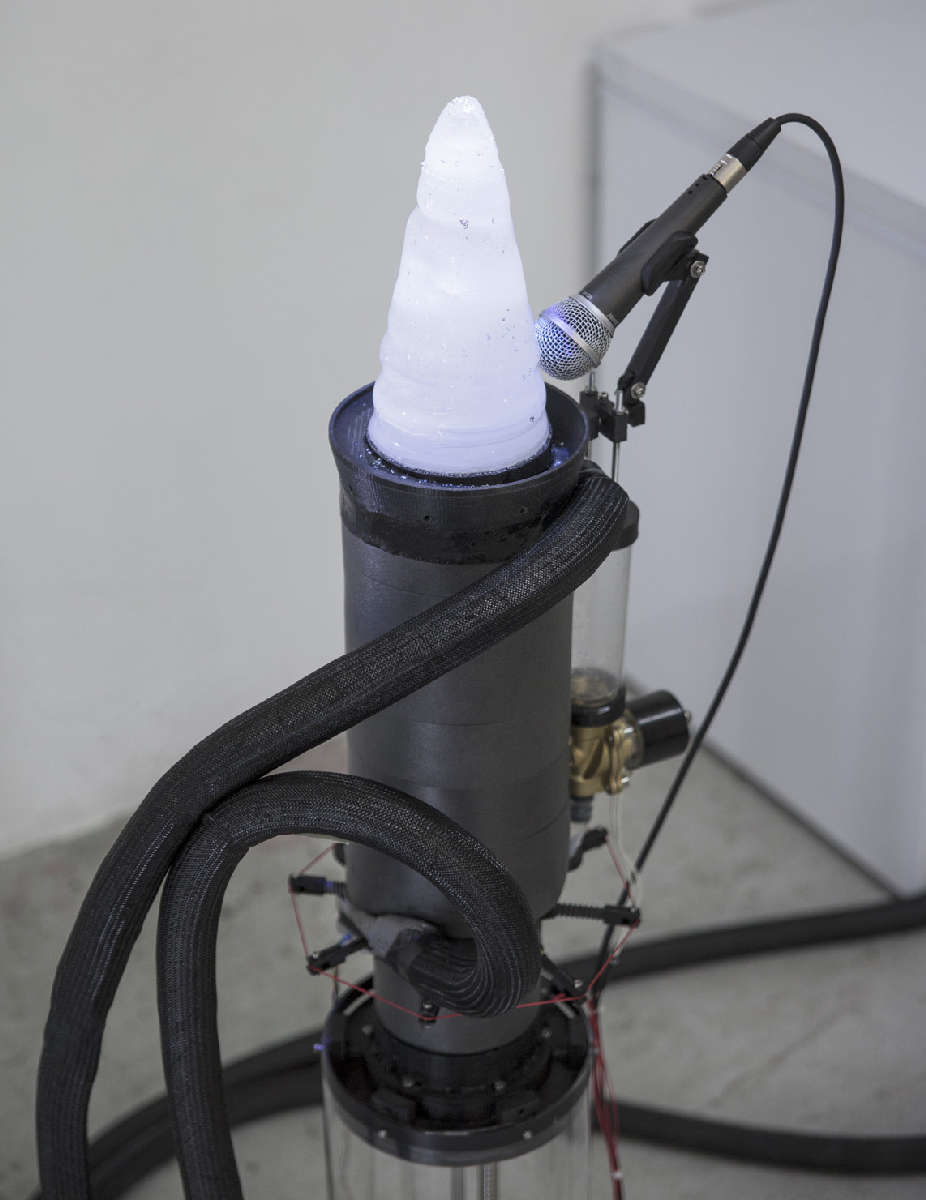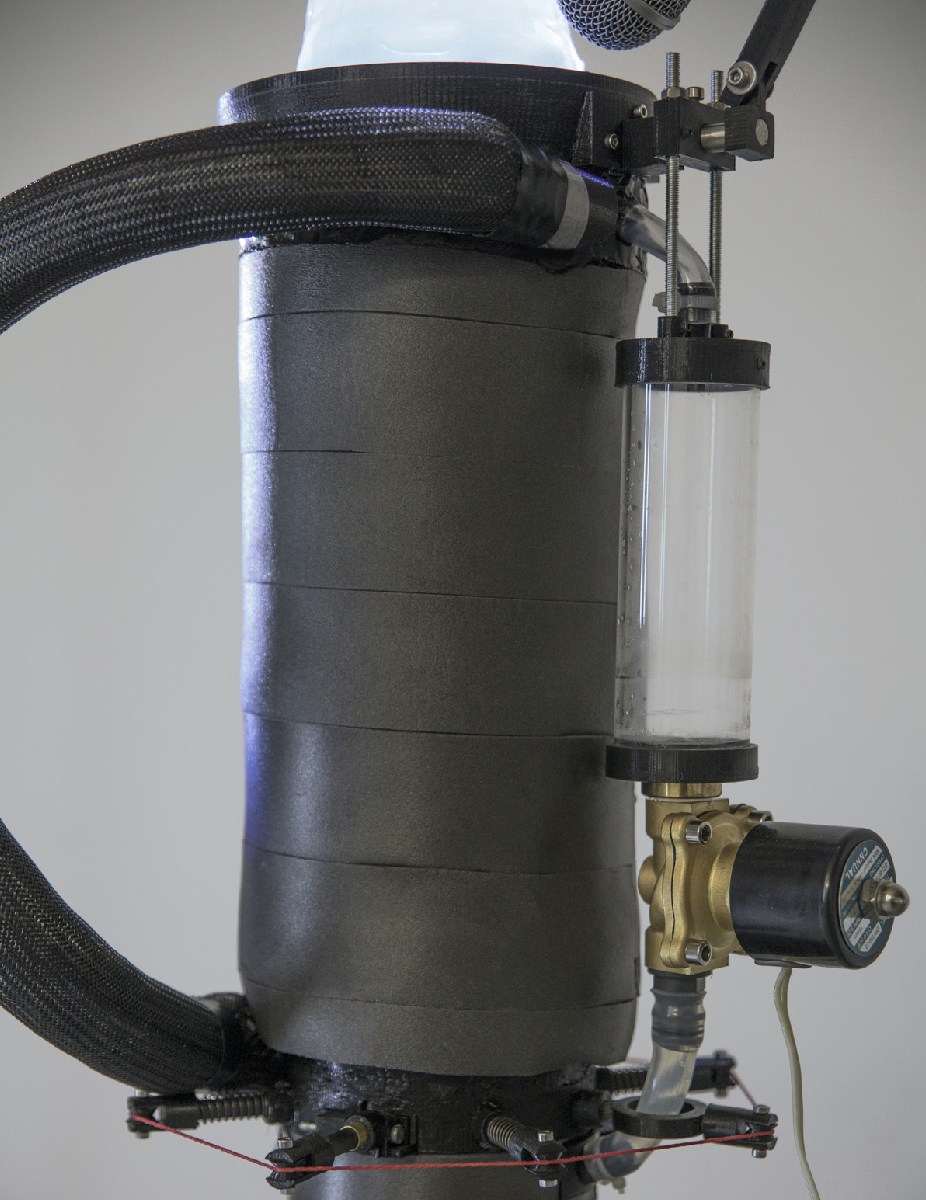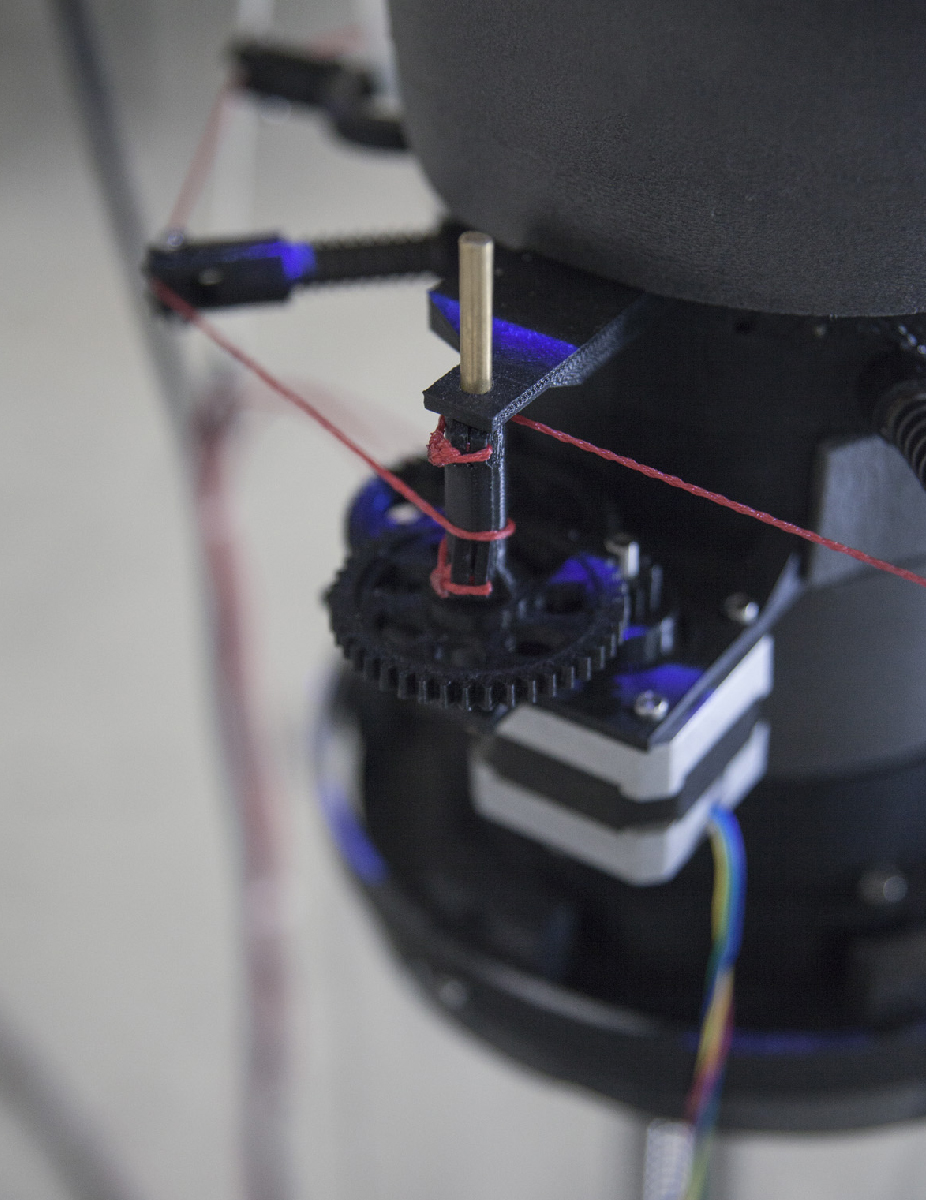How can we perceive History?
Starting from this question, the work explores important developments in technology, science, art and culture by creating a “time-sculpture”, which works with the idea of a dynamic archive combined with the principle of natural stratification. By doing so, it creates a sculpture that scrutinises human time-perception and history and takes as an approach to transfer history’s artificial timeframes into a scale, perceivable by humans.
A textual starting point for the work consists of two dimensions: first an archeological analysis of Chinese media artifacts, following Siegfried Zielinski’s notion of “deep time” and second, a geological aspect arguing with Jussi Parikka.
“Abstract History Machine” explores the mineral sedimentaries of China, that were in a constant correspondence and exchange with the West, thus making it difficult to say what direction drove a certain innovation: which moves the artifact to the center of a diffuse cloud of possible outcomes that reach also into the present.
The work adopts the geological idea by simulating an ice core, which represents a media-artifact history with its multiple layers. The core, through its cyclic nature, is permanently moving upwards and thus seems like growing. By constantly getting taller, the core is being exposed to entropic processes, like the heat from the surrounding area, which over time melts the core and unfolds its precious freight. The released elements, together with the molten water, are then captured, iced and inserted back into the system as the undermost element of the Ice Core, pushing up the whole framework again.
As part of his practice, Daniel Franke produced photographic and text documentation of his process, which can be viewed here.
About the artist



